Plastic-recycling – Waste-clothing 06-01-2023 - Arhive
Plastic-recycling – Waste-clothing
Crude Oil Prices Trend
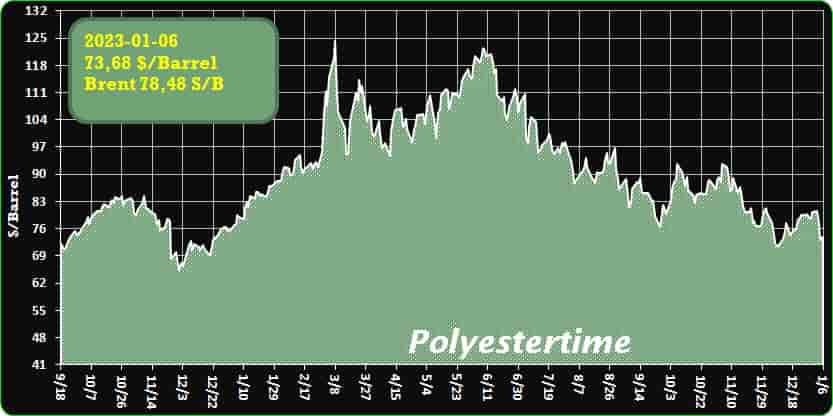
Crude Oil Prices Trend
-Tomra to invest €50-60m on construction of plastic sorting plant in Germany
The plant will be operational between 2024 and 2025 and have a yearly capacity of 80 000t.
Recycling company Tomra’s board of directors has approved an investment of €50-60m for the construction of sorting plant for post-consumer plastic material in Germany.
The mid-scale plant will be developed in an existing facility which Tomra will rent on a long-term basis.
Slated to be operational between 2024 and 2025, the new plant will have sorting capacity of 80,000t a year.
Tomra will use the investment primarily on machinery and equipment.
The new plant will upgrade pre-sorted mixed post-consumer plastic material using splitting and grading process. Plastic-recycling – Waste-clothing
The resulting materials, comprising more than 10 different polymer fractions, will be purchased by recyclers for use in producing flakes and pellets for applications, such as packaging material.
Tomra Recycling EVP Dr. Volker Rehrmann said: “Millions of tonnes of plastic are lost to incineration and landfill every year. In addition, there is an increasing demand for recycled plastics both from chemical and mechanical recyclers.
“Our goal is to use our expertise in sorting to contribute to closing the circularity gap for plastics and transforming mixed plastic waste into valuable feedstock for recyclers.”
Prior to this announcement, Tomra has been working at a demo facility in Lahnstein, Germany, to develop a concept of ‘high-quality’ sorting of separate source and mixed waste plastic.
Tomra president and CEO Tove Andersen said: “The investment we are now making in plastic feedstock sorting is aimed at closing the loop on plastics and reducing dependency on primary resources.”
As the company had NOK660m ($66.8m) in cash as of the end of Q3 2022, its board considers that firm is well capitalised to undertake the investment
In August last year, Tomra partnered with Italian flexible packaging firm Gualapack to pilot a monomaterial polypropylene (PP) spouted pouch. Plastic-recycling – Waste-clothing

-Nexus Circular secures $150M in push for plastic recycling solution
The company says the funding will speed the growth of its advanced recycling process.
Plastics recycler Nexus Circular, Atlanta, has agreed to terms on an equity raise of $150 million. Atlanta-based investor Cox Enterprises led the round of funding and will become the majority owner.
Nexus Circular says the funding will support its efforts to deliver on recycled-plastic commitments by accelerating the expansion of its advanced recycling process, which includes the processing of hard-to-recycle plastic films. The company claims it has consistently produced and commercially sold high-quality, ISCC Plus certified circular products made from landfill-bound plastics, diverting over 7 million pounds to date.
The company says the financing will enable it to build additional capacity to serve its expanding customer base and meet an outsized demand for recycled plastic products. It plans to build facilities that have the capacity to process more than 250 million pounds of used plastic annually. Plastic-recycling – Waste-clothing
“Cox has been incredibly supportive and continues to be enthusiastic about Nexus,” Nexus Circular CEO Jodie Morgan says. “We are leading the advanced recycling industry, making a positive impact addressing the challenges of used plastics in our environment. Demand for Nexus’ products is driven by the end consumers’ preference for products that incorporate recycled plastic, and we are motivated by the contribution Nexus is making. With this funding, our team and partners can more rapidly execute the next phase of growth, accelerating the circular economy for plastics.”
Cox Enterprises Vice President of Cleantech Steve Bradley says, “We’re building platforms with the power to impact both business and the environment. Nexus Circular is an exciting part of our broader cleantech strategy to acquire and scale businesses that have a positive impact on the planet. We continue to look for opportunities to partner with companies like Nexus, which is helping to build a better future for the next generation. That’s what we’re all about at Cox.”
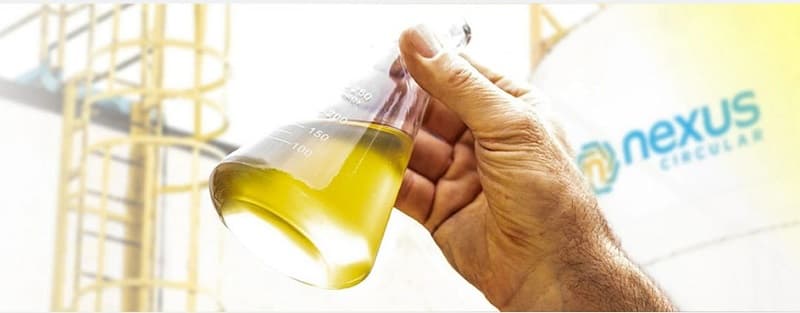
-Single-step pulping of waste clothing
At its new site in Sundsvall, Sweden, Renewcell has successfully produced its first fibre material employing technology including the ADuro textile fibre preparation system from Andritz.
Renewcell applies the process to produce a pure dissolving pulp from 100% textile waste which can subsequently be transformed into new garments for the circular clothing industry.
Andritz installed a complete textile fibre preparation system based on shredding and separation technology at the Sundsvall plant. The line’s shredders form the centerpiece of the system and transform used textiles in a single step, to enable a throughput of up to 60,000 tons of textile waste per year. In the subsequent separation stages, impurities such as buttons and zippers are removed from the shredded textiles.
Since 2016, the two companies have been working together on the development of Renewcell’s textile recycling process at its test plant in Kristinehamn, Sweden, and now also on its first commercial plant in Sundsvall. Plastic-recycling – Waste-clothing
Renewcell was founded in Stockholm, Sweden, in 2012 and specialises in recycling textiles with the vision of making textiles and nonwovens circular. Its recycling technology transforms used cotton and other cellulose fibres into a new raw material called Circulose pulp. The pulp will be primarily used to produce high-quality biodegradable viscose or lyocell textile fibres for the fashion industry.
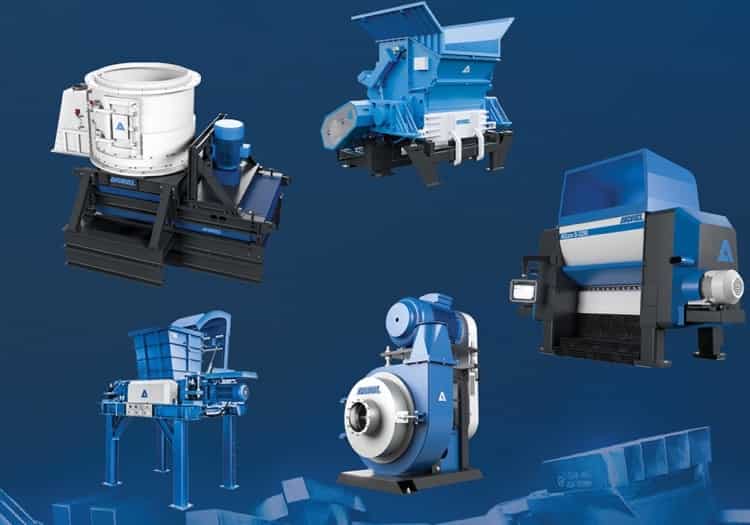
-Polymer Quiets EVs by Way of Structural Chassis, Suspension Applications
New PA 66 from Celanese offers carmakers “damping with structure” to improve NVH performance, remove weight, and reduce costs.
Most automotive OEMs still use metal for structural chassis and suspension applications. Replacing that metal with Zytel NVH Gen 2, a newly formulated polyamide (PA) 66 from Celanese, is said to offer a host of compelling improvements.
In addition to reducing weight, a switch to the Celanese material reportedly gives drivers and passengers a superior driving experience by controlling noise and vibration more effectively than metal. Plastic-recycling – Waste-clothing
Electric vehicles (EVs) pose unique challenges when it comes to isolating structure-borne noise and vibration originating from electric drive units. Without the relatively loud internal combustion engine masking them, these noises become much more noticeable in the vehicle cabin. It’s a complex issue that affects both vehicle safety and passenger comfort. Meanwhile, engineers find it difficult to point to a single part or component that is the root cause of the noise.
Damping material maintains structural properties of base polymer
To meet these challenges, the automotive electrification team at Celanese Engineered Materials developed Zytel NVH70G35HSLA2, the first entry in the Zytel NVH Gen 2 product family. This PA 66-based, 35% glass-filled polymer offers high damping, yet keeps its base polymer’s robust structural properties for parts that need sustained mechanical strength throughout their lifecycles.
“This new Zytel formulation takes a different approach to high-frequency vibration isolation by utilizing the material’s structural damping ability without sacrificing extended fatigue resistance over time,” explained Gabe Knee, Automotive Market Manager, Celanese. “We’ve created a cost-efficient, mass-saving, and tunable solution for electric drive units that mitigates NVH [noise-vibration-harshness] problems in electric vehicles, making them even quieter and more comfortable.” The material can endure high-stress conditions and provide stable characteristics under varying ambient and loading conditions. Plastic-recycling – Waste-clothing
In a recent commercial application in North America involving EV motor mounts for the Cadillac Lyriq, Zytel NVH Gen 2 maintained structural integrity while offering more than 20% direct mass savings and considerable material cost savings compared with aluminum. With these mounts, designers were able to tune, mitigate, or eliminate irritating harmonics that would otherwise be transmitted and detected by drivers and passengers in the cabin.
“With our design and prototyping capabilities,” added Knee, “we help customers identify problematic component designs that are contributing to NVH issues, then help create the solution for managing them.”
SPE-awarded technology
The NVH suspension component that is used in the Cadillac Lyriq received finalist awards in both the 2022 Automotive News PACE competition and 2022 SPE Automotive Innovation Awards. It was molded from the new Zytel NVH Gen 2 material. The vehicle has been described by automotive reviewers as “crypt quiet.”
These materials provide superior NVH performance in the temperature range of automotive applications, produce less noise vs. metal, reduce weight by 30 to 50% compared to metal parts, and reduce costs via parts integration and by eliminating aluminum and insulation needs, according to Celanese.
The company formulated a new glass-filled PA composite to provide enhanced damping/NVH without loss of mechanical properties for the Cadillac Lyriq’s drive-unit mounting brackets. The material enabled structural support brackets to be tuned, along with elastomeric bushings, to provide broad vibrational filtering with 34% reduced mass and 19.5% lower cost. Plastic-recycling – Waste-clothing
Friction, wear, and noise characteristics are system dependent. Celanese has extensive experience developing tribological formulations for customers based on its POM, PBT, PA, PPS, LCP, and PP-LFRT solutions. In response to increased demand for materials with renewable content and lower environmental impact, Celanese has launched sustainable grades for existing products within its Engineered Materials portfolio — biomass balance content (ECO-B) and recycled content (ECO-R) materials.

-European panel approves PET recycling technologies
A scientific review panel has given the green light to several different technologies to recycle post-consumer PET and polyolefins into 100% recycled-content food and drink packaging.
Over the past six months, a panel at the European Food Safety Authority (EFSA) has reviewed PET recycling technologies from EREMA, Kreyenborg and Starlinger. The committee, which is called the Panel on Food Contact Materials, Enzymes and Processing Aids (CEP), also reviewed multiple closed-loop HDPE and PP recycling projects, and it rejected a proposal to recycle production scrap.
In the European Union, recycled plastics can only be used in food and beverage packaging if they’re first reviewed by the EFSA for safety. Plastic-recycling – Waste-clothing
Twice a year, Plastics Recycling Update covers the panel’s opinions. The most recent roundup was published in June 2022. The following are CEP determinations that have been published since then.
(Note: In all the PET recycling processes below, the inputs are washed and dried PET flakes derived from post-consumer food and drink containers. The CEP approvals allow the RPET to be used in 100% recycled-content food and drink packaging.)
Multiple EREMA processes
The CEP gave a thumbs-up to a number of reclaimers seeking to use EREMA recycling technologies to recycle PET.
On May 18, the panel approved two applications to use the EREMA Basic process. One application came from Austria-based EREMA itself, and the other came from Société Générale de Recyclage (SGR) of France.
That process involves continuously feeding PET flakes into a reactor equipped with a rotating device, running in a vacuum under high temperature. The flakes spend a set amount of time in the reactor before they’re continuously conveyed into an extruder. In the extruder, they melt, and the product is then filtered and pelletized.
On May 18, the CEP approved another application from EREMA for the company’s MPR + DS technology. Plastic-recycling – Waste-clothing
Much like EREMA Basic, this process involves feeding flakes into a reactor equipped with a rotating device, running in a vacuum under high temperature. The flakes remain for a set time in the reactor, where they’re crystallized. Then, they’re introduced into a twin-screw extruder, where they’re melted and then extruded into pellets or sheets.
Finally, on May 18, the panel approved EREMA’s application for the MPR technology. The application covers the first part of the MPR + DS technology detailed above, where flakes are processed in a reactor equipped with a rotating device.
The panel also greenlit an application to use EREMA’s Vacurema Prime process. The approval was given to Bangladesh Petrochemical Company on May 17.
Through the Vacurema Prime process, flakes are introduced into twin batch reactors, where they’re heated for a set time. In the reactors, possible contaminants are vaporized and the PET flakes are crystallized. The twin reactors then essentially take turns moving the flakes into a continuous reactor in an ongoing back-and-forth process.
In the continuous reactor, the flakes are further heated and decontaminated. Then the flakes are moved into an extruder, where they’re melted and the melt is filtered before the plastic is pelletized. Plastic-recycling – Waste-clothing
Kreyenborg’s infrared approach
The CEP approved four different applications to use Kreyenborg IR Clean+ technology to recycle post-consumer PET.
This technology involves heating and decontaminating PET flakes by means of an infrared rotary dryer under airflow, up to a defined temperature. Then, the flakes are further decontaminated in a finisher under airflow and high temperature.
On July 8, CEP approved applications for Paccor Polska of Poland, Amhil Europa of Poland, AR Packaging Flexibles of Sweden and Petainer Lidköping of Sweden.
The two Polish companies and AR Packaging Flexibles intend to use the PCR in thermoformed trays and cups to hold beer, juices, fruits, vegetables, desserts, and cooked and uncooked meats and dairy products, with or without hotfill. The packaging is not intended to package drinking water.
For its part, Petainer Lidköping is proposing to use the PCR in containers for drinking water, carbonated beverages, coffee, kombucha, beer, wine and fruit juices, with or without hotfill. Plastic-recycling – Waste-clothing
Numerous Starlinger technologies
The panel also approved a number of different PET recycling technologies from Starlinger.
First, CEP gave the OK to three applications to use the Starlinger deCON process. Through the deCON process, flakes are preheated in a batch reactor before they’re fed into the solid state polycondensation (SSP) reactor, which runs continuously under vacuum. The CEP’s decision notes that the process is run with specific temperature, pressure, gas flow rate and residence time parameters.
For this process, the CEP approved an application from U.K. company Kalex Films on May 19, an application from Greiner Packaging of Ireland on May 19, and an application from Irish company Polyfab Plastics on Sept. 15.
Greiner Packaging issued a press release noting that the EFSA has approved the decontamination process used by Greiner Packaging U.K. and Ireland at its recycling plant in Dungannon, Northern Ireland.
“This is a significant and hugely important step in our journey to use increasing amounts of recycled material in our food-grade packaging,” Julie Eller, the company’s U.K. sales director, said in the release. Plastic-recycling – Waste-clothing
The release noted the company has invested over 3.7 million British pounds (about $4.5 million) into its new PET decontamination and extrusion line. The line will help the packaging producer achieve its goal of at least 30% recycled content in all products, according to the release.
The new integrated line is also able to recycle PET trays, not just PET bottles. The equipment allows Greiner Packaging to produce its K3 brand of containers with 100% RPET. The K3 line has a PET container with a paper-based label wrapped around it; the sleeve is designed to separate from the PET before the container reaches optical sorters, according to the release.
In September, Greiner Packaging acquired Serbian PET flake producer ALWAG, which will be renamed Greiner Recycling.
The CEP also approved five applications from reclaimers planning to use the Starlinger iV+ technology.
In this process, the flakes are continuously dried and crystallized in a reactor under air flow and high temperature. Afterward, the flakes are fed into an extruder under high temperature and vacuum for a time, and then the plastic is pelletized. The pellets are then crystallized at high temperature in a continuous reactor under atmospheric pressure. Finally, the crystallized pellets are preheated in a reactor before they’re moved into a semi-continuous SSP reactor running under vacuum at high temperature for a set amount of time. Plastic-recycling – Waste-clothing
On May 19, the CEP approved applications to use this technology from Greenpet of Mexico, Circularpet IV80 of Spain, Ganesha Ecosphere of India and Extremadura TorrePet of Spain. On July 8, it approved a similar application from Brunetti Packaging of Italy.
Finally, the panel on July 8 approved an application to use Starlinger’s PET direct iV+ technology. The application came from U.S. company Verdeco Recycling Group.
In this process, the flakes are first pelletized, and then the extruded pellets are crystallized in a continuous reactor with inert gas flow for a specific amount of time. Then, the pellets are further heated and introduced semi-continuously into the SSP reactor running under vacuum, where they remain for a predefined residence time.
Closed-loop polyolefin recycling proposals
The CEP approved applications to recycle HDPE and PP crates and box pallets back into the same products, with tight feedstock source control in each case.
The panel on May 19 greenlit an application to use a recycling process called “Cajas y Palets en una Economia Circular” (CAPEC), which translates to boxes and pallets in a circular economy. The application, which came from a Spanish company of the same name, involves recycling pre-cleaned crates of food-grade HDPE and PP into new crates at up to 100% recycled content. The new crates would also be used to store fruits and vegetables at room temperature or below. Plastic-recycling – Waste-clothing
The recycling process is simple: The sorted and cleaned crates are shredded into flakes, which are washed with potable water at room temperature and then dried by a centrifuge, ground and packed in bags. Or, if the desired output is pellets, the crates are shredded, washed with potable water at room temperature, dried by a centrifuge, ground, extruded, filtered and packed in bags.
The resulting flakes or pellets may or may not be blended with virgin HDPE or PP before dye is added and the plastic is injection molded into new crates.
Later, on July 8, the panel approved an application for a recycling process from Spanish company LOGIFRUIT. The company is looking to recycle post-consumer HDPE and PP crates that hold fruits, vegetables, packed meats, fish, dairy products and bakery products.
Again, the recycling process is simple: Damaged crates are pre-cleaned, sorted and ground. The flakes are further washed with water, dried and packed. Later, they may or may not be blended with virgin HDPE and PP before they’re injection-molded into new crates. Plastic-recycling – Waste-clothing
The number of reprocessing cycles is low, the application notes, because crates have a lifetime of 120 uses or more, and only about 4% of them break each year.
Finally, on May 18, the CEP approved an application to recycle HDPE box pallets used by slaughterhouses to store and transport packed and unpacked meats into new box pallets for the same use. The application was submitted by Dutch company Kunststof Recycling Nederland.
Again, the recycling process is simple and involves shredding the box pallets and then removing metals. The shredded pieces are then ground, de-dusted, packed in big bags and labeled. The plastic may or may not be blended with virgin HDPE before Dolav Plastic Products molds it into new box pallets.
Production scrap proposal rejected
The panel on Sept. 15 rejected an application from U.K. company Loop Polymers to recycle PE and PP production scrap from food packaging manufacturing into new food packaging.
The company had applied to recycle printed offcuts and scrap. Through the process, the scrap would be hand sorted, washed, and wet- or dry-ground into flakes, which would be washed in friction vessels to remove inks, coatings and adhesives. The resulting flakes would be used at up to 30% recycled content in new PP or PE products, according to the application.
But the panel wasn’t convinced by the data it was provided.
“The applicant has not demonstrated by appropriate evidence that the recycling process is able to reduce contamination of the input PE or PP offcuts and scrap with printed ink and coating systems to a concentration that does not pose a risk to human health,” according to the decision. Plastic-recycling – Waste-clothing
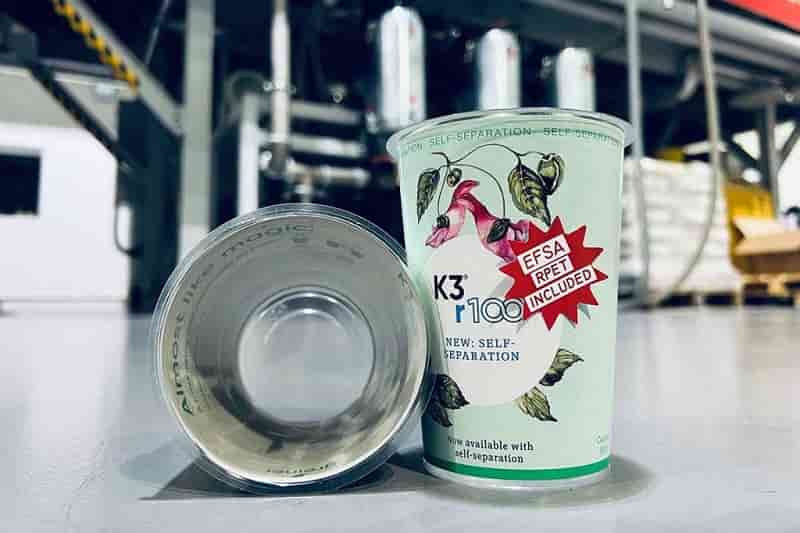
-Brands advance sustainability – but use more plastic overall
In 2021, major brands increased their use of PCR and cut back on “problematic plastics,” but the amount of plastic they put on the market grew by over 5%, according to the World Wildlife Fund.
The World Wildlife Fund’s ReSource: Plastic program released its third annual report, “Transparent 2022,” which explored the plastic usage of members such as Amcor, Colgate-Palmolive, McDonald’s Corporation, The Coca-Cola Company and CVS Health.
Year-over-year findings included “positive incremental improvements across aspects of their supply chains,” a press release noted, including an overall reduction of small plastics such as utensils, coffee stirrers and straws by 1,500 metric tons and a 35% increase in the use of recycled content. Plastic-recycling – Waste-clothing
Taking a look at the bigger picture, recycled content use increased from 343,000 metric tons in 2019 to 559,000 metric tons in 2021, the report found. Recycled content is now 10.2% of members’ aggregate portfolio, up from 8.0% in 2020.
About 33% of the recycled content was reported in North America, 29% in Latin America and the Caribbean and 26% in Europe and Central Asia, the report noted.
“In the past year, ReSource Members have taken critical actions to support the wide scale adoption of reuse systems,” the press release noted.
However, the brands also increased the total tonnage of plastic produced by 5.3% in 2021.
About 4.83 million metric tons of plastic were sold by members to retailers and consumers or discarded in house in 2021, and 2.37 million metric tons were sold business to business, the report stated, with the caveat that when plastic footprints are aggregated across members, there’s potential for double counting of plastic sold between members.
Based on WWF’s waste management model, 34% of that plastic footprint was recycled, 9% incinerated, 43% landfilled and 15% mismanaged, the report noted.
The percentage of virgin plastic used decreased from 90.6% in 2019 to 87.1% in 2021, but the tonnage increased by about 35,300 metric tons because of an increase in overall tonnage. Plastic-recycling – Waste-clothing
The findings are similar to tho se that the Ellen MacArthur Foundation announced in November.
Erin Simon, vice president and head of plastic waste and business at WWF, said measurement and data sharing are “critical first steps” and praised members for “taking their plastic waste footprint seriously and being transparent about how they are working to address it.”
“The next, more challenging step is ramping up the pace of progress,” Simon said. “This will be difficult but it’s still very possible to meet our goals. The investments we’re seeing beyond the supply chain are a good example of the ambition I want to see in all areas.”
WWF launched ReSource in 2019 with the goal of getting 100 companies to prevent up to 50 million metric tons of plastic waste.
David Clark, vice president of sustainability at Amcor, said the findings of the report “reflect the need to continue developing effective waste management infrastructure and public policy to ensure valuable materials remain in the economy and out of the environment.”
Lisa Morden, vice president of safety, sustainability and occupational health at Kimberly-Clark, said in the press release that while the company’s growth and supply chain challenges have created “headwinds to advancing our plastic footprint reduction goals,” it still doubled the percentage of recycled content in its plastics packaging and is moving to more sustainable materials and processes.
Starbucks launched more than 20 trials of reusable and returnable cup programs around the world, reduced the plastic in its hot cups by 25% and is working with supply chain partners to improve access to food grade recycled resins, Michael Kobori, chief sustainability officer, noted. Plastic-recycling – Waste-clothing
“We still have work to do to meet our goals and decouple our plastic usage from our business growth,” Kobori added. “We are excited to unlock reusable cups for our customers to lead us into the circular economy of the future.”
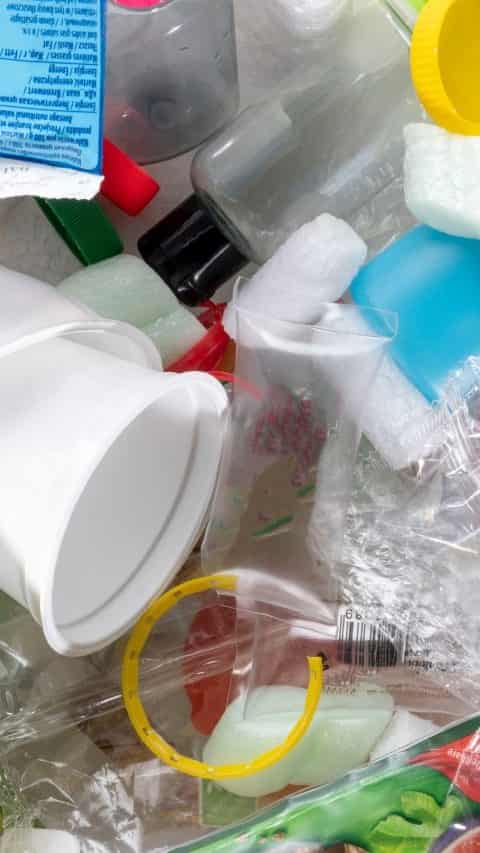
-Renewables account for 49.6% of Germany’s power mix in 2022
Renewables account for 49.6% of Germany’s power mix in 2022 Solar farm Burhafe in Lower Saxony, Germany. Image by Oekorenta.
The share of renewables in Germany’s power mix rose to 49.6% in 2022 from 45.6% in the prior year, driven by a solid increase in solar power generation.
Overall, renewable power plants produced 244 TWh last year compared with 226 TWh in 2021, the Fraunhofer Institute for Solar Energy Systems ISE said on Tuesday.
Electricity generation from solar energy grew 19% on the year to about 57.6 TWh in 2022, helped by sunny weather and the 6.1 GW of new solar capacity that was deployed across the country by the end of November. About 52.6 TWh of the total solar output was fed into the public grid and 5 TWh were self-consumed. Fraunhofer ISE noted that between April and August, solar systems in Germany produced more electricity than coal-fired power plants. Plastic-recycling – Waste-clothing
Wind energy was the biggest source of electricity in Germany last year with onshore wind parks generating 98.7 TWh and offshore turbines adding a further 24.8 TWh. At the end of November, the country’s installed onshore wind capacity was 58.2 GW while offshore wind reached 8.1 GW.
Unlike wind and solar, hydropower generation fell to 16 TWh in 2022 from 19 TWh a year earlier although the installed capacity remained stable at 4.94 GW. The drop was caused by the hot and dry summer.
Biomass-fired power plants with a total capacity of 9.4 GW produced a further 42.2 TWh which is 0.4 TWh more than in 2021.
Among conventional energy sources, coal-fired power generation increased for the third year in a row as a result of the energy crisis caused by the war in Ukraine. Lignite power plants fed 107 TWh into the grid, up from 99 TWh, and hard coal contributed 56 TWh, up from 47 TWh.

Plastic-recycling – Waste-clothing
